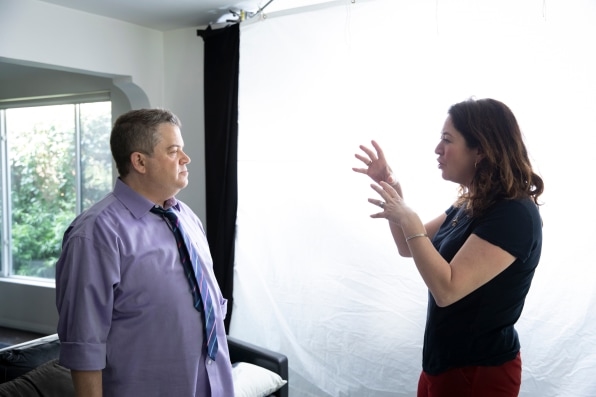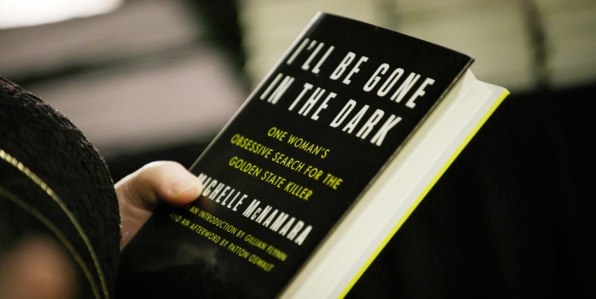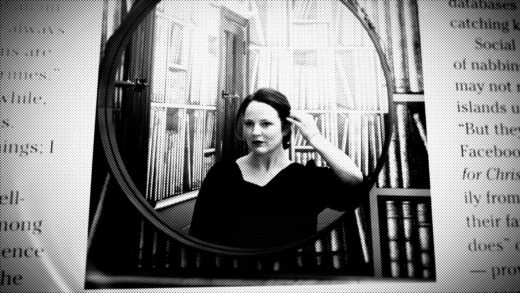How ‘I’ll Be Gone in the Dark’ reinvents the true crime doc by shifting focus
It’s a remarkable coincidence of timing. On June 29, the day after HBO premieres its new true-crime series, I’ll Be Gone in the Dark, based on Michelle McNamara’s best-selling book, the person allegedly behind those crimes is expected to plead guilty to 13 counts of murder and kidnapping.
Another new development had previously collided with this documentary’s production—and proved even more consequential.
Back in April 2018, on the first day of filming, Sacramento police arrested Joseph D’Angelo, the Golden State Killer, for crimes that had gone unsolved since the 1970s. His capture rocked Oscar-nominated director Liz Garbus’s plans for the doc in progress, but it didn’t change them quite as much as one might think.
Because the Golden State Killer isn’t actually the focus of I’ll Be Gone in the Dark.
“His getting arrested changed it in that episodes five and six are now focused on how he was tracked and caught and, of course, how his capture affected the survivors,” Garbus tells Fast Company during a recent phone conversation. “But episodes one through four, his name is not uttered once. It was never really about the serial killer. It’s always been about the survivors, and Michelle’s journey.”
While too many true-crime TV shows and podcasts over the years have reduced the survivors at their center to one-dimensionality, McNamara refused to do that in her work. The late author was known in her blogging days at True Crime Diary for fleshing out stories of murder and sexual assault with special care toward the victims. They always came across as whole people who weren’t solely defined by the horrible fate that befell them.
For Garbus, this was the only way to approach the subject matter of McNamara’s book, as well as its author, who passed away in 2017 before the manuscript could be completed. (McNamara’s husband, comedian and author Patton Oswalt, eventually helped put together the remainder of the project.)
I’ll Be Gone in the Dark introduces viewers to both the author and the survivors of the Golden State Killer in detail that goes far beyond the scope of the book.
Through access to an incredible stockpile of files, journals, and documents, not to mention interviews with friends and family, Garbus tells the story of McNamara’s immersion into amateur sleuthing.
“I love the intersection of technology and crime solving, applying DNA to old crimes,” actor Amy Ryan narrates from McNamara’s journaled words in voiceover. “I want to be a part of that. Everyone has their cause and this just feels like what I was born to do.”
Although McNamara always enjoyed reading crime stories, it wasn’t until she accurately diagnosed the similarity between two kidnapping cases in Missouri, days before the police announced the connection with an arrest, that she suspected she might have a talent for solving them. She soon began to devote herself compulsively to writing about unsolved crimes, eventually gravitating toward one case in particular.

[Photo: courtesy of HBO]
For the decade spanning the mid-1970s through the mid-’80s, a serial killer terrorized California, committing nearly 50 rapes and at least 13 murders. Alternately known as the East Area Rapist and the Original Night Stalker, the killer started out in Sacramento, burglarizing hundreds of homes, before moving on to the Bay Area and Southern California for a spree of far worse crimes. For decades, he eluded not only capture but even identification.
I’ll Be Gone in the Dark reveals McNamara’s descent into obsession over unmasking the killer, plunging into a community of like-minded citizen detectives, reaching out to survivors, and collaborating with the detectives who originally worked the case. The quest eventually lead McNamara to write a widely shared article for Los Angeles Magazine, where she officially coined the name Golden State Killer, and subsequently secured a book deal.
Over the course of retracing McNamara’s steps with three codirectors—a process that included interviewing survivors the author had spoken with and others she hadn’t—Garbus ultimately felt like she came to know the author, ultimately sharing her desire to see the killer caught.
“I definitely was able to relate to Michelle on many levels, not just her obsessive nature, but also as a working mom, trying to balance all the joys and demands of family life with artistic pursuits and work pursuits,” the director says. “I really related to her on that level. And I think that when we didn’t know the name Joseph D’Angelo yet, we certainly hoped that by continuing along Michelle’s path, maybe there would be a break.”

Although the Sacramento police who caught DeAngelo firmly denied that McNamara’s book prompted the arrest, what is indisputable is that the author shone an enormous spotlight on the killer’s many unsolved crimes and renewed interest in a case that had long since gathered dust.
As we continue the current national conversation about defunding the police, it’s worth pondering whether more amateur sleuths like Michelle McNamara will someday factor more actively in solving crimes. Even though cases like the Golden State Killer make up so little of what police actually spend their time on—a recent study of New York City police showed just 4% of their work was devoted to violent crime—the extra help certainly couldn’t hurt.
“I think this case shows you that there is a lot of talent out there and part of rethinking police is also about collaboration and not being siloed and breaking down that thin blue line of secrecy,” Garbus says. “Michelle was able to do that in this case.”
Fast Company , Read Full Story
(26)



